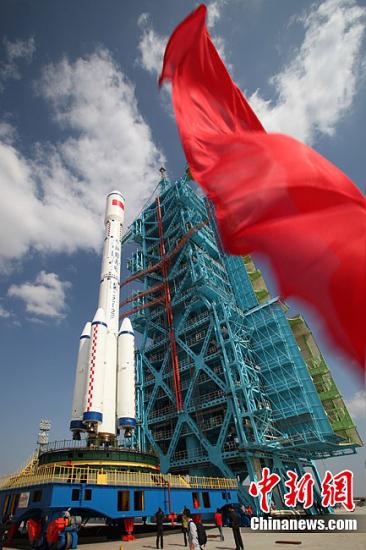Jiuquan (CNS) -- The Heavenly Palace, China's self-developed aircraft, will set about for its two-year mission by the end of September, Bai Mingsheng, deputy designer-in-chief at the space lab system of the Chinese Academy of Space Technology, told CNS recently.
According to Bai, the Heavenly Palace, 10.4 meters long and with a maximum inner diameter of 3.35 meters, is assigned four tasks: (1) space rendezvous and docking (RVD) with the Shenzhou spacecraft; (2) control and management over the two crafts after RVD, including orbit control and cabin atmospheric monitoring; (3) experiments on space technology, space medical science, and regenerative life support; and (4) technological verification of the space station.
Academician Qi Faren of the Chinese Academy of Sciences, who was the first designer-in-chief of the Shenzhou spacecraft series, pointed out that during the current second phase of China's three-step manned space projects, called the space laboratory phase, the main task is to develop critical technologies in setting up a space station.
The duty is highly demanding in four aspects: (1) astronauts walk out of the cabin, which has already been achieved by the Shenzhou-7; (2) two aircrafts achieve RVD, which is expected in the near future, between the target aircraft Heavenly Palace and the tracing aircrafts Shenzhou-8, Shenzhou-9, and Shenzhou-10, respectively; (3) flying spacecraft can be supplemented with resources from the ground; and (4) the space station is assured of air and water cyclic utilization by a regenerative life support system. The last two are still in process of being researched.



















